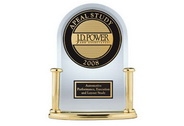Advertisement
J.D. Power and Associates reports: Customer commitment to retail banks declines for second consecutive year

Driven by declines in both satisfaction and brand image, customer commitment to retail banks has decreased in 2009, according to the J.D. Power and Associates 2009 Retail Banking Satisfaction Study. This marks a steady decline in customer commitment since 2007.
Now in its fourth year, the study finds that only 35 percent of customers say they are highly committed to their retail bank in 2009, compared with 37 percent in 2008 and 41 percent in 2007. On average, highly committed customers use more products, give more referrals and are much less likely to switch to another bank, compared with customers who have lower commitment levels.
“Customers reporting the lowest levels of commitment in 2009 happen to be those with deposit balances that are 15 percent higher than average,” said Michael Beird, director of the banking practice at J.D. Power and Associates. “With this in mind, it is crucial that banks take steps to address this steady decline in customer commitment, as moving just 5 percent of customers from low and moderate levels of commitment to high commitment can mean additional deposit growth of more than 2 percentage points higher than average. This is critical in an environment where four to five percent is the norm.”
The study finds an increase in problems experienced by customers in 2009, as 15 percent of customers reported a problem in the past 12 months—up from 12 percent in 2007. Among customers experiencing a problem, the most frequently reported issue deals with fees, with 46 percent of customers reporting a problem in 2009. This also marks an increase from 44 percent of customers reporting issues with fees in 2008.
As such, customers report lower satisfaction levels in the area of fees in 2009—dropping 19 points compared with 2008. Fees are also the greatest driver in customer attrition, with one in three customers who switched banks during the past 12 months doing so because of higher fees. In particular, overdraft fees increased more than other types of fees, rising on average from $30 in 2008 to $35 in 2009.
“Despite the increase in problem incidence, banks are making strides in resolving problems that do occur, as customer satisfaction with problem resolution has improved—up 30 points from 2008 to 527 in 2009,” said Beird. “In particular, banks are taking steps to resolve more issues at the initial point of customer contact and have reduced the number of times the customer must contact the bank for answers. Additionally, customers report higher satisfaction with the number of conveniently located branches and online transactions.”
The study also finds that customer perceptions of bank brand image have declined for a third consecutive year. Low customer ratings in the areas of overall reputation, customer focus and personal service primarily drive the decrease in brand image among banks.
“These findings not only reflect recent negative media coverage about the banking industry, but also the reality of staff cuts, higher service charges and the effects of bank mergers on customer perceptions and experiences,” said Beird. “The challenge that banks face is most clearly underscored by findings from the recently released 2009 Purchase Funnel Special Report, which shows that 30 percent of customers cite questionable ethics, financial instability or poor reputation as key reasons for specifically avoiding a particular institution when shopping for a new bank.”
The 2009 Retail Banking Satisfaction Study also finds that despite the challenging financial market, some banks have achieved high commitment levels from more than 50 percent of their customers, which is well above the industry average of 35 percent. In addition, these banks exceed the industry average for key satisfaction measures, including convenience, fees and transactions. Customers of these banks also rate them highly regarding brand image, particularly for customer focus, personal service and financial stability.
“Banks with high brand image scores typically engage in practices that focus on strong communication with customers, such as welcoming them to the branch office or following up on problems,” said Beird. “By focusing on aspects most critical to the banking experience, banks can win the favor of their customers, which can lead to considerable financial rewards.”
The study analyzes customer satisfaction with the retail banking experience based on six factors: transactions; account statements; account initiation/product offerings; convenience; fees; and problem resolution. Study results by region are:
Mid-Atlantic Region: TD Bank ranks highest in the region with a score of 774, performing particularly well in convenience. Community Bank (766) and Susquehanna Bank (761) follow in the regional rankings.
Midwest Region: With scores of 754, Commerce Bancshares, Inc., and Harris National rank highest in a tie in the region. Chase follows with a score of 748.
Mountain Region: Wells Fargo ranks highest in the region with a score of 727, performing well in account initiation/product offerings, account statements, convenience, fees and transactions.
New England Region: People’s United Bank ranks highest with a score of 751, performing particularly well in convenience, account initiation/product offerings, account statements and transactions. TD Bank (746) and Wachovia (726) follow in the rankings.
Southeast Region: With a score of 815, Arvest Bank ranks highest in the region and performs well in convenience and account initiation/product offerings. First Tennessee Bank (788) and First-Citizens (Bancshares) (771) follow in the regional rankings.
Southwest Region: Wachovia ranks highest in the region with a score of 792, performing well in account initiation/product offerings, fees, account statements and transactions. Zions First National Bank follows with a score of 760, and Capital One ranks third with 756.
West Region: Bank of the West ranks highest with a score of 749 and performs well in account statements and transactions. Wells Fargo (743) and WaMu (730) follow in the regional rankings.
The 2009 Retail Banking Satisfaction Study is based on responses from 28,570 households regarding their experiences with their primary banking provider. The study was fielded in January 2009.
For more information, visit www.JDPower.com.
About the author





